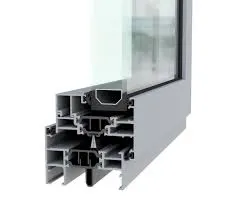wrought iron vs iron
Wrought Iron vs. Cast Iron Understanding the Differences
When discussing iron, two terms often arise wrought iron and cast iron. While these two materials share a common origin—iron ore—they differ significantly in composition, properties, and applications. Understanding these differences is crucial for anyone involved in construction, metalworking, or historical restoration.
Composition and Production
Wrought iron is primarily composed of iron with a very low carbon content, usually less than 0.08%. This low carbon content gives wrought iron its unique properties. Traditionally, wrought iron is produced by a process called puddling, where pig iron is heated and worked until the carbon content is reduced, and impurities are removed. This results in a malleable and ductile material that can be easily shaped and worked.
In contrast, cast iron contains a higher carbon content, ranging from 2% to 4%. This higher carbon content alters its properties significantly. Cast iron is produced by melting iron and alloying it with carbon in a foundry. Once poured into molds, it solidifies into a rigid structure. The cooling process allows for the formation of different crystalline structures, leading to various types of cast iron, including gray, white, and ductile cast iron, each with its specific characteristics.
Physical Properties
The physical differences between wrought iron and cast iron are stark. Wrought iron is known for its toughness, malleability, and ductility. It can be hammered, bent, or rolled into thin sheets without breaking. This makes it an excellent choice for applications requiring intricate designs and detailed work, such as railings, gates, and decorative elements.
On the other hand, cast iron is hard and brittle. While it boasts excellent compressive strength, it lacks the tensile strength of wrought iron. This means that cast iron can withstand heavy loads but is more susceptible to cracking and breaking under tension. Consequently, it is often used for items that require rigidity, such as pipes, cookware, and engine blocks.
wrought iron vs iron

Applications
The applications of wrought iron and cast iron reflect their distinct properties. Wrought iron's malleability makes it ideal for ornamental work, such as gates and furniture. Historically, wrought iron was the material of choice for blacksmiths who created tools, hardware, and artistic pieces due to its ability to be forged into complex shapes.
Cast iron, due to its casting capabilities and durability, is widely used in construction and heavy industries. Common applications include sewer pipes, engine blocks, and various machinery parts. Additionally, cast iron cookware, such as skillets and Dutch ovens, is beloved by chefs for its excellent heat retention and even cooking capabilities.
Maintenance and Longevity
When it comes to maintenance, wrought iron often requires more care due to its susceptibility to corrosion. While it can be treated with protective coatings, regular upkeep is necessary to prevent rust and deterioration. In contrast, cast iron, although also prone to rust, often develops a natural patina that can protect it from further corrosion, especially when seasoned properly in the case of cookware.
Conclusion
In summary, while wrought iron and cast iron originate from the same base material, their differences in composition, properties, and applications make each suitable for specific uses. Wrought iron's malleability and decorative qualities make it a favorite for artistic and structural projects, while cast iron's durability and strength position it as a preferred choice in heavy-duty applications. Understanding these materials' unique characteristics can help individuals make informed decisions in their respective fields, whether it be construction, restoration, or culinary arts.
-
Window Lock Handle for Security UpgradesNewsJun.20,2025
-
Proper Lubrication Techniques for Sliding Gate WheelsNewsJun.20,2025
-
Ornamental Iron Castings for Interior DesignNewsJun.20,2025
-
Creative Ways to Decorate Around a Cast Iron FireplaceNewsJun.20,2025
-
Cast Iron Pipe and Fitting for Plumbing SystemsNewsJun.20,2025
-
Cast Iron Panel Casting for Architectural ElementsNewsJun.20,2025















